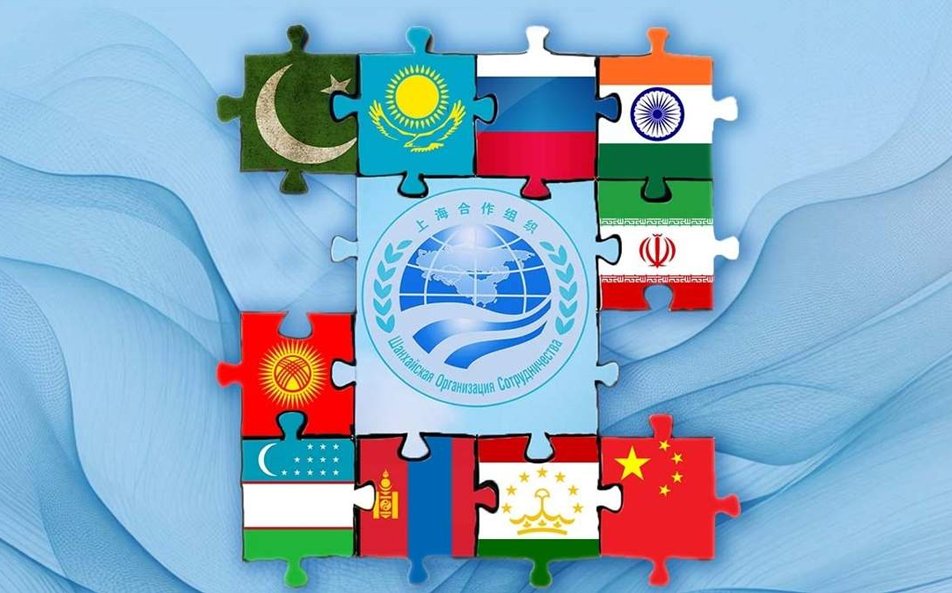Often called the “NATO of the East,” the Shanghai Cooperation Organization (SCO) emerged post-Cold War, not just as a regional organization but as a geopolitical experiment that aimed at blending Eastern diplomacy along with non-Western alliances.
China, Russia, Kazakhstan, Kyrgyzstan, and Uzbekistan were the founding members of this regional pact, which also later on included powers like India, Pakistan, and Iran.
Every year SCO summit arrives with a grand and symbolic gesture. The real question is, is it shaping the future or just staging it? Because for the world, it is a gathering of nuclear powers, economic giants, but behind the unity lies a paradox: how can an organization that includes both India and Pakistan, or Iran and Russia alongside China, truly function as a coherent bloc?
Every year, the summit promotes cooperation on security, economy, and connectivity.
SCO Tianjin Summit 2025
The SCO Tianjin Summit 2025 is the 25th Heads of State Council meeting of the organization.
On July 15, 2025, the Secretary-General of SCO Nurlan Yermekbayev and Member of the Political Bureau of the CPC Central Committee and China’s Foreign Minister Wang Yi announced that, as agreed by the member states, the annual summit will be held in Tianjin from August 31 to September 1.
Wang Yi signaled that the Tianjin Summit is going to be the largest one in the history of the SCO and also expressed confidence that with the concerted efforts of all parties, the summit will surely be a grand event featuring solidarity, friendship and fruitful outcomes, and that the SCO will enter a new stage of high-quality development characterized by stronger solidarity, coordination, dynamism and productiveness.
Who’s Leading the 2025 Summit?
The host, China, holds the presidency for 2024-2025, and its goals are clear and loud. With Xi Jinping calling the SCO a “model for a new type of international relations”, China is expected to push for these aims:
- Expanded trade in Yuan to challenge Dollar dominance
- Institutionalizing the SCO Development Bank
- Deeper security drills under the RATS (Regional Anti-Terrorist Structure) banner
The Chinese Foreign Minister proposed a bold vision development plan centered on the “Shanghai Spirit” of mutual trust, equality, and consultation.
Participating Countries
At SCO summit every year, leaders of all member states, SCO countries, observer states, and dialogue partners come together.
This year, leaders from more than twenty countries and heads of ten international organizations will attend the summit and related events.
Prime Minister of Pakistan Shahbaz Sharif will also be leading a delegation to the Summit in August.
Read More: PM Shehbaz Will Head to China for SCO Summit and Pak-China Business Forum
Key Meetings Before the Summit
Several meetings have taken place before the Summit in August. Some of them include:
- The Defense Ministers Meeting held in Qingdao in June 2025, this Meeting was anything but routine. The agenda was focused on enhancing joint counterterrorism capabilities, military coordination, and regional security threats, but the outcomes were overshadowed by visible fractures and internal issues. Most notably, India refused to sign the joint communique, citing the omission of explicit language condemning the Pahalgam terror attack that occurred earlier in the year.
- The Head of State Preparatory Meeting was held weeks before the Tianjin summit, where SCO heads of state and their envoys met virtually to prepare the draft language for the Tianjin Declaration and finalize the SCO Development Strategy for the period 2025–2035.
- The 10th Meeting of Ministers of Agriculture of the Shanghai Cooperation Organization member States was held in July at Kunming, China, where the delegations adopted a document. The document was aimed at further strengthening mutually beneficial ties in the field of agriculture, promoting trade, economic, scientific, and technological cooperation, and ensuring food security.
The pre-summit meetings were less about consensus and more about managing contradictions. Defense talks showcased a hardening of red lines, whereas head-of-state dialogues reflected the ideological balancing act.
Read More: SCO Members Seek Mutually Beneficial Ties in Agriculture
What Has Changed in a Year?
There have been a lot of changes since last year’s summit, hosted by Pakistan.
- Belarus’s accession as the 10th full member shifted the SCO into Europe, expanding its ideological and geographic reach.
- China’s presidency has resulted in increased integration of trade, energy, and financial frameworks, including plans for an SCO Development Bank and clearance systems in local currencies.
- The Energy Ministers meeting resulted in the 2030 roadmap, showing growing cooperation in renewables, indicating SCO’s pivot toward climate resiliency and sustainable growth.
- Afghanistan’s continuous instability, rising regional terrorism, and trust deficits have intensified and led the SCO to double down on counterterrorism protocols and regional task forces as RATS continues to get the most priority.
A Recap of 2024 Summit
The SCO Summit 2024, hosted by Pakistan, was the first time the country hosted it since it became a full member in 2017. The summit was framed as a milestone for regional diplomacy, and Pakistan showcased itself as a bridge between South Asia and Central Asia and the wider Eurasian region.
It was a successful event, but the problems were also there as India’s decision to send a lower-level delegation rather than Prime Minister Modi himself highlighted persistent bilateral tensions and cross-border issues.
Is the 2025 SCO Summit going to be the “coming of age” moment? In a world where the West is fragmented, and multipolarity is no longer a dream but a dilemma, the SCO has a choice: either lead with coherence or crumble under contradiction.
Tianjin might not give all the answers, but it will certainly tell us which direction this alliance is headed next.
An IR student whose interest lies in diplomacy and current affairs and a part time debater




